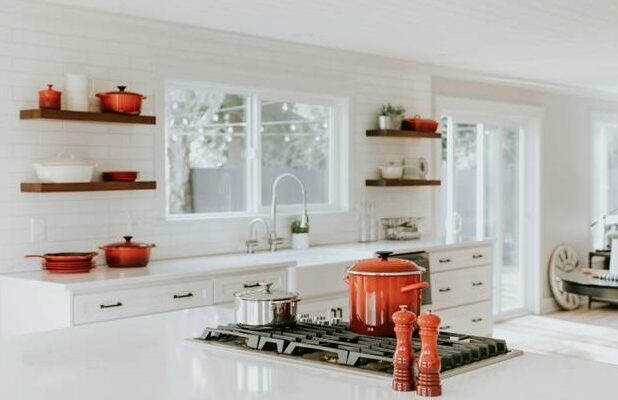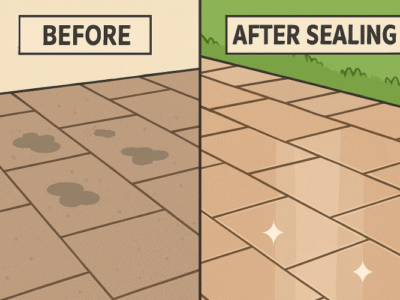Homeowners across Florida crave both style and function in their kitchens, especially in a growing metro like Tampa. With neighborhoods evolving and tastes changing, kitchen remodeling has become more than just an upgrade; it’s now a chance to personalize your space while boosting the value of your home. Many Tampa residents feel the pressure of finding the right balance between aesthetics, usability, and investment. But the truth is, with the right plan, even the most outdated kitchen can transform into a modern culinary haven. This guide simplifies the remodeling process step by step, so you know exactly what to expect and how to plan your dream kitchen without the guesswork or stress.
1. Define Your Goals and Priorities
Make sure you understand why you want to redecorate before choosing colors or materials. Do you need more counter space? Is your layout inefficient? Are the cabinets worn out, or does the kitchen feel disconnected from the rest of your home? Identifying what bothers you about your current kitchen helps you focus on improvements that matter. Also, consider your lifestyle if you love to cook or host guests often; your kitchen needs to reflect that. Keep your family’s habits in mind, too. Remodeling is a big investment, so your new kitchen should serve your everyday needs.
2. Research Local Trends and Professional Help
Style preferences vary depending on where you live, and Tampa is no exception. In recent years, homeowners here have leaned toward open-concept kitchens with large islands, bright cabinetry, and transitional finishes. Normal light and breezy formats suit the neighborhood climate and way of life. Beyond design, it’s vital to choose the right team for the job. Tampa kitchen contractors offer a wide range of services, but not all are created equal. Look for professionals with strong local reputations, portfolios that match your taste, and transparent pricing. Ask friends and neighbors for recommendations, and always check licenses and reviews before making a choice.
3. Create a Realistic Budget and Timeline
Kitchen remodeling expenses depend on size, materials, and scope. Prioritize spending and decide how much to invest. Do you prefer custom cabinets or high-end appliances? Set aside 10–15% of your budget for structural surprises or electrical upgrades. Think about your timeframe next. Do you need the project finished before a holiday or special occasion? By clarifying expectations early, contractors appreciate clarity and avoid delays. A precise budget and timeline guide everyone to success.
4. Develop the Design and Layout Plan
Now imagine your kitchen’s appearance and functionality. Start with your current layout and identify what works and what doesn’t. Are there areas that feel cramped? Could you move the sink closer to the stove for efficiency? You don’t always need a full gut renovation to improve flow; sometimes, rearranging appliances or removing a wall makes a big impact. Work with a designer or contractor to sketch options and explore possibilities. Design tools and mood boards help determine colors, textures, and lighting. Your design should reflect your personality, but stay practical for everyday use.
5. Choose the Right Materials and Finishes
Materials shape the mood of your kitchen and determine how well it holds up over time. Cabinet finishes, countertop materials, flooring, and backsplashes all play a role in both form and function. For example, quartz counters offer durability with a modern look, while hardwood floors add warmth but need more upkeep. Choose finishes that match your lifestyle. Families with kids may prefer stain-resistant surfaces, while avid cooks might want heat-proof countertops. Think long-term. Classic designs age better than trendy ones. Visit showrooms, feel samples, and ask about warranties. A well-informed choice today prevents regret and maintenance headaches later.
6. Hire the Right Contractors and Specialists
Once your plan is ready, it’s time to bring in the pros. Hiring the right contractors ensures your project runs smoothly from start to finish. Start by interviewing at least three specialists. Verify credentials, review past projects, and request detailed quotations. Choose someone who communicates well, listens to your vision, and provides honest feedback. A good contractor coordinates schedules, sources materials efficiently, and ensures quality workmanship. Don’t forget the permits Your contractor should know the local requirements and pull them as needed. Working with experienced professionals keeps your remodel on track and prevents costly mistakes.
7. Prepare Your Home for the Renovation
Remodeling a kitchen means disruption. Prepare your home and your family before the dust starts flying. Set up a temporary kitchen in another part of the house using small appliances like a microwave or hot plate. Pack up everything from drawers and cabinets, and label the boxes for easier unpacking later. Keep dust off neighboring floors and furniture. Try scheduling meals or eating out more. Remodeling is messy, but planning helps. Setting expectations with your household early reduces frustration and keeps stress levels low throughout the process.
8. Oversee the Construction Phase
With the crew on-site, your role shifts to observer and communicator. Check in with your contractor regularly to ensure the work follows the plan. Address issues quickly, small changes are easier to fix early. Stay accessible for decisions on things like paint finishes, tile placement, or hardware styles. Keep track of progress, deliveries, and budget. If delays or weather affect the schedule, be flexible but informed. Don’t micromanage, but do stay involved. Your presence shows commitment and helps maintain accountability. A hands-on approach during construction helps the project move efficiently and minimizes last-minute surprises or regrets.
Kitchen remodeling doesn’t have to feel overwhelming. With a clear vision, practical planning, and the right team by your side, you can turn even the most outdated kitchen into a space that’s beautiful, functional, and tailored to your lifestyle. Each step from the first sketch to the final screw matters in creating a kitchen that works for you. The road requires patience, but the reward is worth it. When done right, your kitchen becomes more than just a cooking space; it becomes the true heart of your home, built for years of memories and meals ahead.
If you want morе еxciting contеnt, visit. Globallyviz.com














Comments